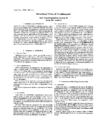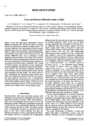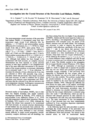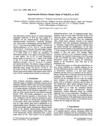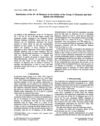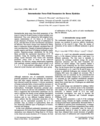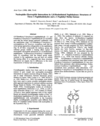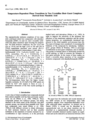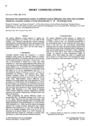issue contents
February 1998 issue

Cover illustration: Space filling representation of the hydrated anionic framework formed by trimesic acid around piles of cobalticinium cations in crystalline [(C5H5)2Co][(H3TMA)(H2TMA)].2H2O. Graphics (picture or drawing) obtained using SCHAKAL by E. Keller, University of Freiburg, Germany. Courtesy of D. Braga and F. Grepioni
international union of crystallography
Free 

research papers
Precise X-ray and electron diffraction studies of MgO have been performed. Experimental structure amplitudes have been compared with those calculated by the non-empirical Hartree–Fock method and analysis of both experimental and theoretical electron densities and electrostatic potentials is described.
Download citation


Download citation


Polycrystalline neutron diffraction and low-temperature single crystal X-ray diffraction are used to investigate the room- temperature phase of lead hafnate, PbHfO3. The octahedral distortion and cation shifts arising in this pseudo-cubic perovskite are compared with those of the technologically important material PbZrO3.
Download citation


Download citation


The deformation electron density of NaH2PO4 has been studied at 30 K as a reference for the electron-density characteristics of hydrogen-bonded ferroelectrics containing phosphate ions and the effective charges were obtained.
The M-M distances (M = Al, Ga, In, Tl), in their oxides, are not distributed uniformly, but present maxima at values near the corresponding distances in the pure metals.
A new computer program, nbp, is used to fit a training set of 15 borane crystal structures with an (exp-6-1) intermolecular force field.
Download citation


Download citation


Structures of compounds containing the 2-en-3-amino-1-one heterodienic system are investigated; they form intermolecular N-H⋯O resonance-assisted hydrogen bonds by which the molecules are connected in infinite chains. The effects of the substituents on the enaminonic systems and the chain morphologies are analyzed in order to discover crystal engineering rules to predict and interpret crystal packings.
Download citation


Download citation


The experimental electron density study of 4-cyanoimidazolium-5-olate at 120 K shows details of its molecular mesoionic structure.
Download citation


Download citation


Crystal structures of several 8-oxygenated 1-naphthaldehydes and 1-naphthyl methyl ketones indicate that the carbonyl group in the former approaches coplanarity with the naphthalene ring, while in the latter it approaches orthogonality. This difference in behavior is discussed in terms of steric effects and C-H⋯O interactions.
Download citation


Download citation


The crystal structures of two inclusion complexes of mandelic acid derivatives and DMF [(1) and (2)], which show reversible solid–solid phase transitions dependent on temperature, have been established for both crystal forms [170 and 250 K, and 170 and 270 K] of (1) and (2), respectively.
short communications
The neutron diffraction crystal structure of vitamin B12 coenzyme contains an intramolecular N-H⋯Ph hydrogen bond with an energy of ca 16.7 kJ mol−1.


 journal menu
journal menu








